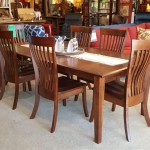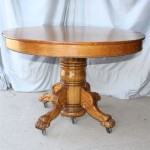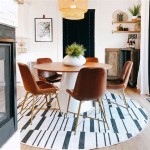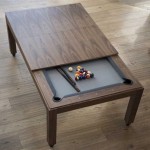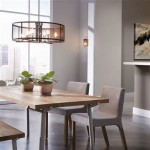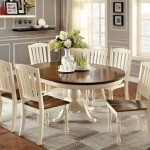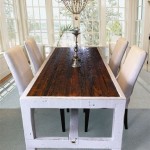Pottery Barn Marble Dining Table: A Comprehensive Overview
The Pottery Barn marble dining table represents a significant investment in home furnishings, combining aesthetic appeal with durable materials. These tables are designed to serve as a focal point in dining spaces, offering a blend of classic elegance and contemporary design. This article provides a detailed analysis of Pottery Barn marble dining tables, encompassing aspects such as material composition, design variations, care and maintenance, and price considerations.
Marble, as a natural stone, possesses inherent variations in veining and coloration, making each table unique. Pottery Barn utilizes this natural element to create dining tables that are not only functional but also visually captivating. The selection process for the marble slabs is crucial, ensuring both structural integrity and aesthetic consistency with the brand's overall design philosophy. This rigorous selection contributes to the perceived value and desirability of these dining tables.
The integration of marble into dining table designs reflects a broader trend towards incorporating natural materials into home décor. Consumers are increasingly drawn to the authenticity and tactile qualities of materials like marble, seeking to create spaces that feel both luxurious and grounded. Pottery Barn capitalizes on this trend by offering a diverse range of marble dining tables that cater to various aesthetic preferences and spatial requirements.
Material Composition and Characteristics
The primary material in a Pottery Barn marble dining table is, naturally, marble. However, the specific type of marble used can vary, impacting the table’s appearance, durability, and price. Common types of marble utilized in these tables include Carrara marble, known for its subtle grey veining and predominantly white background; Calacatta marble, prized for its bold, dramatic veining and brighter white coloration; and Emperador marble, distinguished by its rich brown hues and intricate veining patterns. Each type of marble offers a distinct aesthetic, allowing consumers to select a table that complements their existing décor.
Beyond the marble itself, the base of the dining table plays a critical role in its structural stability and overall design. Pottery Barn typically offers bases constructed from materials such as solid wood, metal (often steel or iron), or a combination of both. The choice of base material and design can significantly influence the table’s aesthetic. For instance, a solid wood base can lend a sense of warmth and traditional elegance, while a metal base may contribute to a more contemporary and industrial feel. The type of finish applied to the base also impacts the overall look and feel of the table.
The marble slabs used in Pottery Barn dining tables typically undergo a sealing process to protect them from staining and etching. Marble, being a porous material, is susceptible to damage from liquids, particularly acidic substances. The sealing process creates a protective barrier that minimizes the absorption of liquids, thereby reducing the risk of stains. However, even with sealing, prompt attention to spills is crucial to maintain the table’s pristine appearance. Regular resealing may also be necessary, depending on the type of sealer used and the frequency of use.
It is important to note that marble's inherent porosity makes it prone to scratching. While a polished surface can showcase the beauty of the stone, it also reveals scratches more readily. Consider using placemats and coasters to prevent scratches and protect your marble surface. Choosing a honed or matte marble finish can help disguise small scratches.
Design Variations and Dimensions
Pottery Barn offers marble dining tables in a variety of shapes and sizes to accommodate different dining space configurations and seating requirements. Common shapes include rectangular, round, oval, and square. Rectangular tables are generally suited for larger dining rooms and can comfortably seat a greater number of people. Round tables foster a sense of intimacy and are ideal for smaller spaces or more informal gatherings. Oval tables offer a compromise between the rectangular and round shapes, providing ample seating while maintaining a softer, more organic aesthetic. Square tables are often used in smaller dining areas or as accent pieces.
The dimensions of the table are a critical consideration when selecting a Pottery Barn marble dining table. It is essential to measure the dining space accurately to ensure that the table fits comfortably and allows for adequate clearance around the table. Consider the number of people who will typically be seated at the table and select a size that accommodates them comfortably. Pottery Barn typically provides detailed dimension specifications for each table, including length, width, height, and seating capacity.
The design of the table base contributes significantly to the overall aesthetic. Pottery Barn offers a range of base designs, from simple pedestal bases to more elaborate trestle or leg configurations. The choice of base design should complement the shape of the marble top and the overall style of the dining room. For instance, a sleek, minimalist base might pair well with a round marble top in a contemporary setting, while a more ornate base might be appropriate for a rectangular marble top in a traditional setting.
Some Pottery Barn marble dining tables feature expandable designs, allowing for increased seating capacity when needed. These tables typically incorporate leaves that can be added or removed to adjust the table’s length. Expandable tables are a practical solution for homeowners who frequently entertain guests but have limited space.
Care and Maintenance
Proper care and maintenance are essential to preserve the beauty and longevity of a Pottery Barn marble dining table. As previously noted, marble is a porous material that is susceptible to staining and etching from liquids, particularly acidic substances. Therefore, prompt attention to spills is crucial. Use a soft, damp cloth to wipe up spills immediately. Avoid using abrasive cleaners or scouring pads, as these can scratch the marble surface.
For general cleaning, use a pH-neutral cleaner specifically formulated for marble. These cleaners are designed to effectively remove dirt and grime without damaging the marble surface. Avoid using acidic or alkaline cleaners, such as vinegar, lemon juice, or bleach, as these can etch the marble. Follow the manufacturer’s instructions for applying and removing the cleaner.
To protect the marble surface from scratches and dents, use placemats and coasters. Avoid placing hot dishes directly on the marble, as this can cause thermal shock and potentially damage the stone. Use trivets or hot pads to protect the surface from heat. Consider using a marble sealant to further protect the surface from stains. Follow the manufacturer's advice for sealant frequency.
Regular dusting with a soft cloth is recommended to remove dust and debris. This will help prevent the buildup of dirt and grime that can dull the marble’s surface. For stubborn stains, consult a professional marble restoration specialist. They can use specialized techniques to remove stains and restore the marble to its original condition.
The base of the table may require different cleaning methods based on its material. Wood bases should be treated with appropriate wood cleaners and polish. Metal bases can be cleaned with a damp cloth and mild soap. Always test any cleaning product on an inconspicuous area of the base before applying it to the entire surface.
It is important to note that some etching and staining may be unavoidable over time, particularly with lighter-colored marbles. Embracing these imperfections as part of the marble's natural character can add to its unique charm and history.
Finally, proper storage of leaves (if applicable) is important. They should be stored in a dry, safe place to prevent damage. When storing leaves, ensure they are properly supported to prevent warping or bending.
The price of a Pottery Barn marble dining table varies depending on factors such as the type of marble used, the size and shape of the table, the design of the base, and any additional features such as expandable leaves. Generally, tables made with rarer or more highly sought-after marbles, such as Calacatta, will be more expensive than those made with more common marbles, such as Carrara. Larger tables and those with more elaborate base designs will also tend to be more expensive. While Pottery Barn marble dining tables typically represent a significant investment, their durability, aesthetic appeal, and potential to appreciate in value make them a worthwhile consideration for discerning homeowners.

Chapman Round Marble Pedestal Dining Table 39

Chapman Round Marble Pedestal Dining Table 39

Marble Dining Tables Pottery Barn

Rae Round Marble Pedestal Bistro Dining Table 32 Pottery Barn

Cayman Round Pedestal Extendable Dining Table 48 66

15 Best Pottery Barn Dining Tables On

Pottery Barn Avon Marble Dining Table Style Furniture

Chapman Oval Bistro Table 54

Pottery Barn Noah Marble Counter Height Dining Table 70 The Summit

Daily Find Pottery Barn Rae Marble Bistro Table Copycatchic

